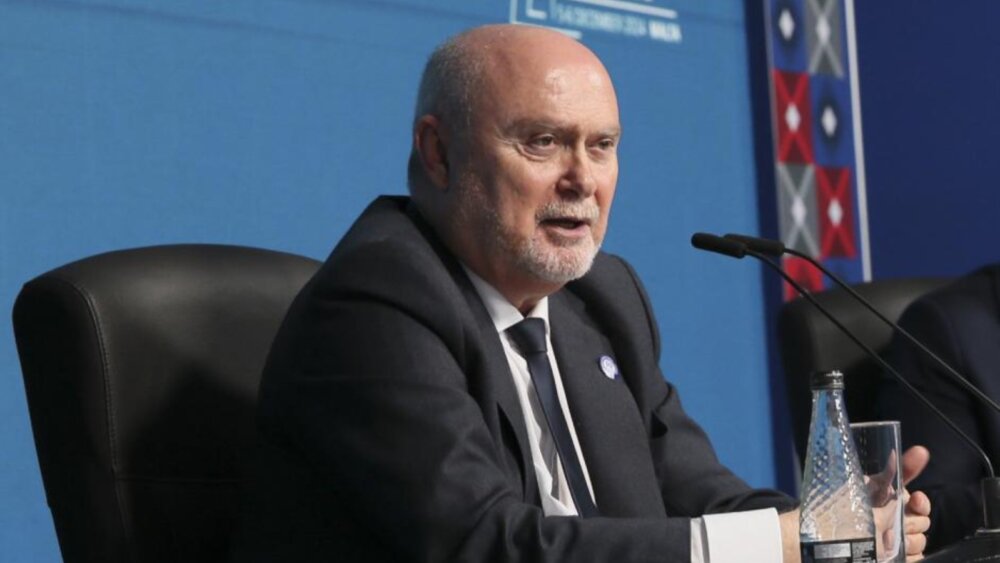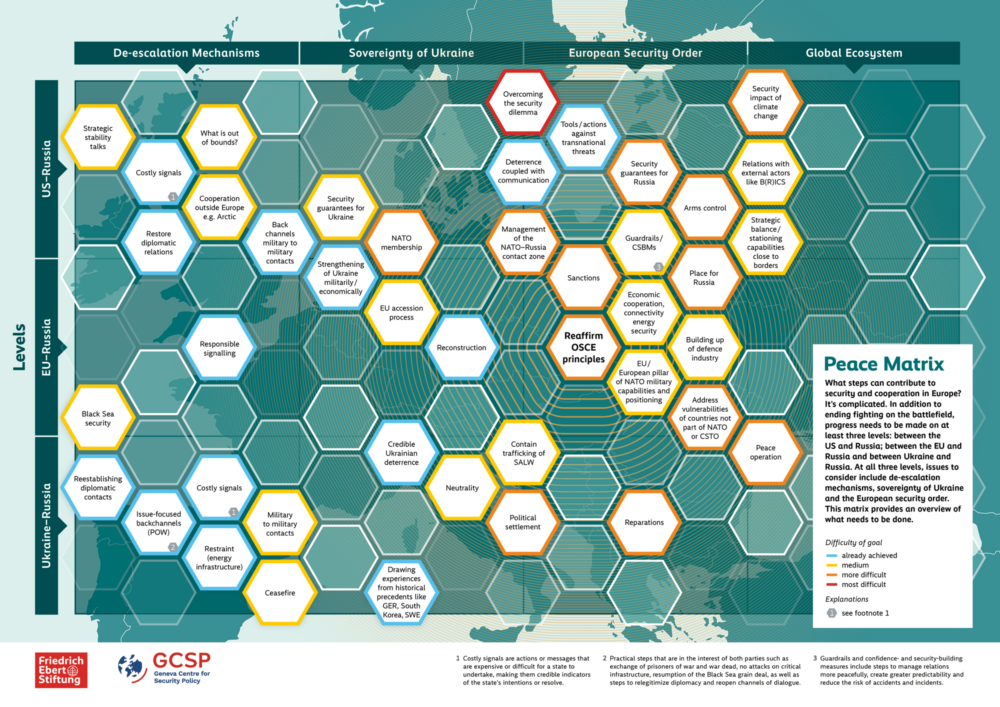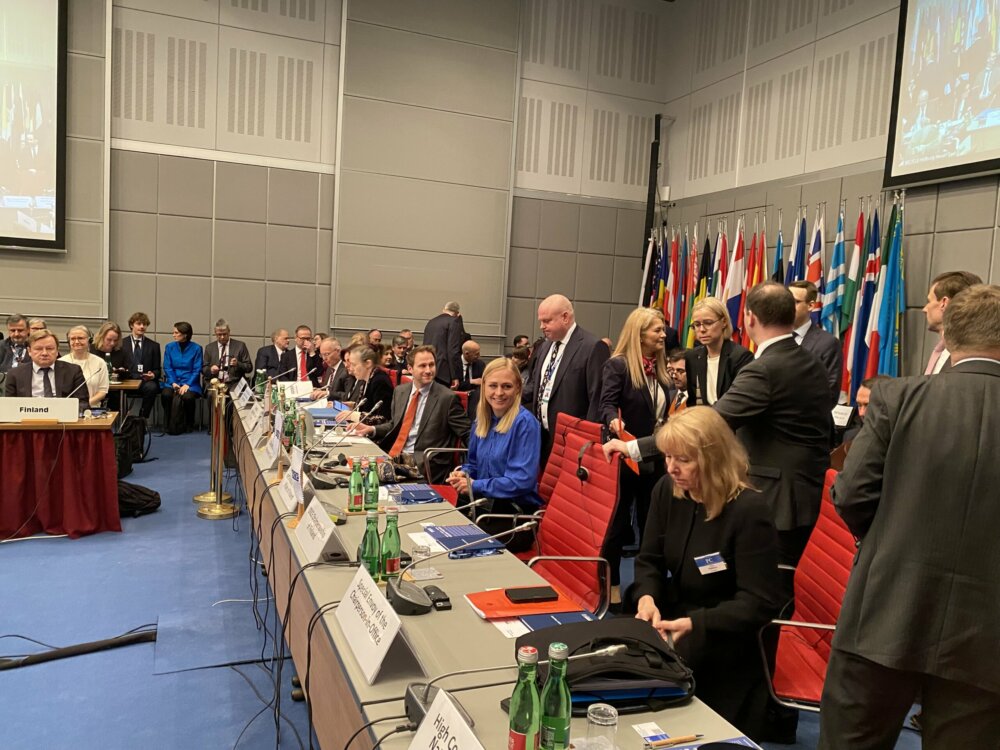New Window of Opportunity in the Transdniestrian Settlement Process
On 2 and 3 June the so-called 5+2 talks on the conflict between Moldova and its breakaway region of Transdniestria resumed in Berlin after a two year hiatus. The current German OSCE Chairmanship was instrumental in helping to re-launch the negotiations, which include Moldova and Transdniestria as the conflict parties, Russia, Ukraine and the OSCE as mediators and guarantors, and the USA and the EU as observers. In an effort to inject further impetus into the talks, on 26 and 27 July, the OSCE Chairperson-in-Office, German Foreign Minister Frank-Walter Steinmeier, traveled to Moldova to hold high-level talks.
This blog argues that the resumption of the 5+2 talks has opened a window of opportunity for progress to be achieved on the implementation of key confidence-building measures between now and autumn, when both Moldova and Transdniestria will hold presidential elections. The momentum should not be lost, since tensions in the region have increased significantly since the outbreak of the Ukraine crisis in 2014.
Background
The Transdniestria conflict dates back to the dissolution of the Soviet Union. At the time, nationalistic and separatist sentiments were on the rise as individual former Soviet republics, which harbored different ethnic minorities, became independent states. In Transdniestria, for example, only about one third of the population is Moldovan while the remaining two thirds are of Russian and Ukrainian origin. After the dissolution of the Soviet Union, those Russian and Ukrainian speaking minorities felt alarmed by a possible Moldovan-Romanian unification, leading to possible curbing of their rights. This led to a brief war that lasted from 1990 until 1992, with Transdniestrian forces, supported by the 14th Soviet (later Russian) army fighting on one side, and Moldovan forces fighting on the other side. A ceasefire was brokered by Russia in July 1992 and a joint Moldovan-Transdniestrian-Russian peacekeeping force was created in order to maintain peace and security in the region.
Hence, the war ended but the underlying conflict was not settled. Transdniestria was never recognized as a sovereign and independent state. Instead, Transdniestria turned into a de-facto state with de-facto institutions that are politically, militarily and economically supported by Russia.
Increased tensions in the region
Since the outbreak of the Ukraine crisis in 2014, tensions have also increased with regard to Transdniestria.
For example, when Russia illegally annexed the Crimean Peninsula from Ukraine in March 2014, politicians in Transdniestria’s de facto capital Tiraspol asked Moscow to do the same with Transdniestria. Tiraspol based its request on a “referendum” that was held in 2006, where a majority of the Transdniestrian population voted in favor of independence and eventual accession to Russia.
Although Russia did not follow through with this request, Russia did boost its economic ties with Transdniestria in reaction to the signing by Moldova of an EU Association Agreement, including a Deep and Comprehensive Free Trade Agreement, in June 2014.
Furthermore, tensions increased significantly in May 2015, when Ukraine suspended an agreement from 1995, that allowed Russia to supply its troops still stationed in Transdniestria via Ukraine. Kiev explained that this move came as a reaction to “Russia’s aggression against Ukraine”. Transdniestria is squeezed between Moldova and Ukraine, making the land corridor through Ukraine the only viable route through which Russia can reach Transdniestria. Now that the 1995 agreement has been suspended, Russia can only reach its troops (and partially resupply them) via Moldovan airspace. This air route is, however, not very reliable, given the fact that Moldova has concerns about Russian troops in Transdniestria.
Tensions also rose when United States troops entered Moldova from Romania (a NATO country) on 3 May of this year to hold a joint military exercise under NATO’s Partnership for Peace Program, which Moldova joined in 1994. Russia views NATO as contradicting basic Russian national and security interests.
The above-mentioned developments have not only led to increased tensions in the region but also to a series of accusations from all sides. Firstly, Transdniestria accused Ukraine of amassing troops alongside its border leading both Russia and Transdniestria to believe that Moldova and Ukraine could launch a joint military assault on Transdniestria. Secondly, Russia accused Moldova and Ukraine of having imposed a full-fledged military and economic blockade on Transdniestria. This issue could lead to further tensions in the coming months if not solved quickly. Thirdly, some in the West are anxious and believe that Russia could extend its military infiltration to southern Ukraine, around the city of Odessa, in an effort to create a land corridor between Crimea and Transdniestria.
Window of opportunity
All of the above developments show the urgent need for dialog between all parties in order to reduce tensions and to increase trust. Although one of the main aims of the 5+2 talks is to also discuss and define the final status of Transdniestria, at the current stage making progress on the implementation of confidence-building measures is a necessary and realistic way forward.
As a result of the renewed 5+2 talks, a Protocol was signed in Berlin on 3 June, in which Tiraspol and Chisinau committed to achieving progress on a number of key confidence-building measures before the Bavaria Conference on Transdniestria, an annual gathering that helps the parties implement confidence-building measures. Out of the five key issues, which include the reconnection of telecommunication networks, the apostilisation of Transdniestrian university diplomas, the recognition of Transdniestrian car license plates, ecological issues and the exchange of lists of criminal cases, the sides only made concrete progress on the latter two before the Bavaria meeting, which took place on 12 and 13 July in Bad Reichenhall.
Therefore, the OSCE Chairperson-in-Office (CiO) German Foreign Minister Frank-Walter Steinmeier decided to inject further impetus into the talks by visiting Moldova on 26 and 27 July. CiO Steinmeier held talks with high-level Moldovan politicians, including with Prime Minister Pavel Filip and with Deputy Prime Minister and Minister of Foreign Affairs and European Integration Andrei Galbur. CiO Steinmeier also met with representatives of the Transdniestrian leadership, including with Pavel Prokudin, Vitaly Ignatiev and with the speaker of the Supreme Soviet Vadim Krasnoselsky.
It is now crucial that the momentum, which has been created by the renewed 5+2 talks and the Berlin Protocol, does not get lost and that the remaining confidence-building measures are implemented quickly. This is necessary since both Moldova and Transdniestria will hold presidential elections in October and November of this year, respectively. During the election period, talks are usually on hold, given the uncertainty about who will be in the driving seat. Therefore, it is crucial that the parties make substantive and quick progress before the election campaigns go into full swing and the window of opportunity closes again.



Comments
* Your email address will not be published